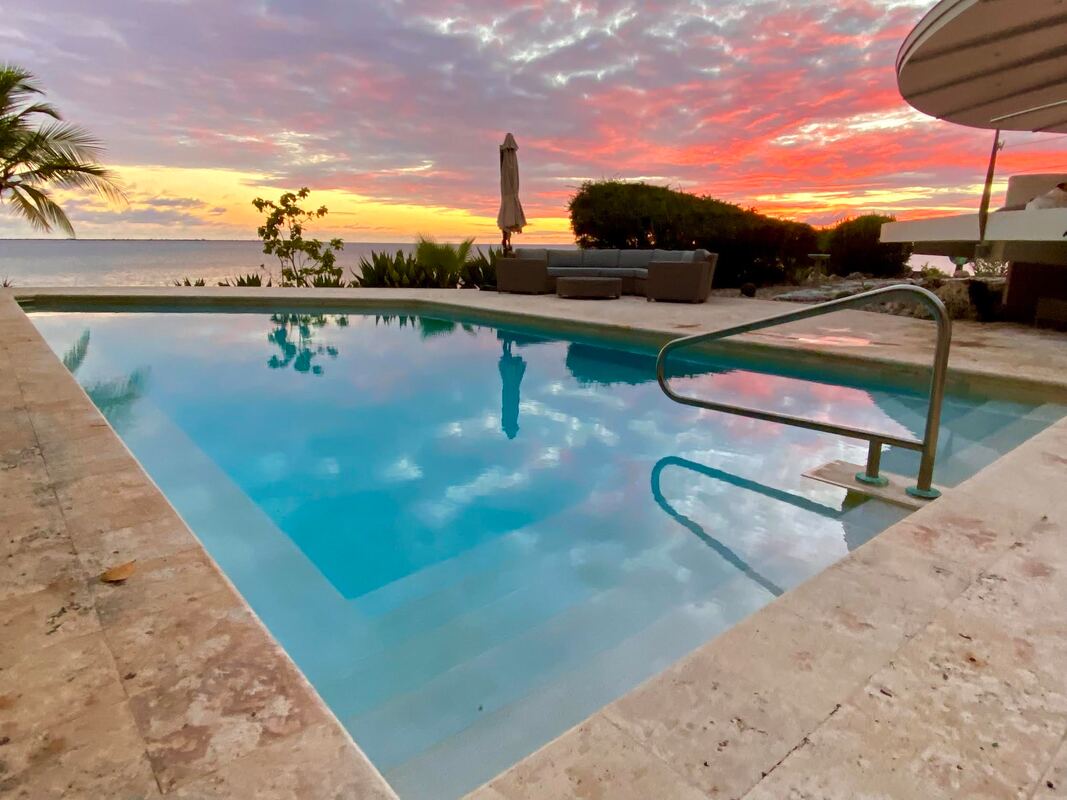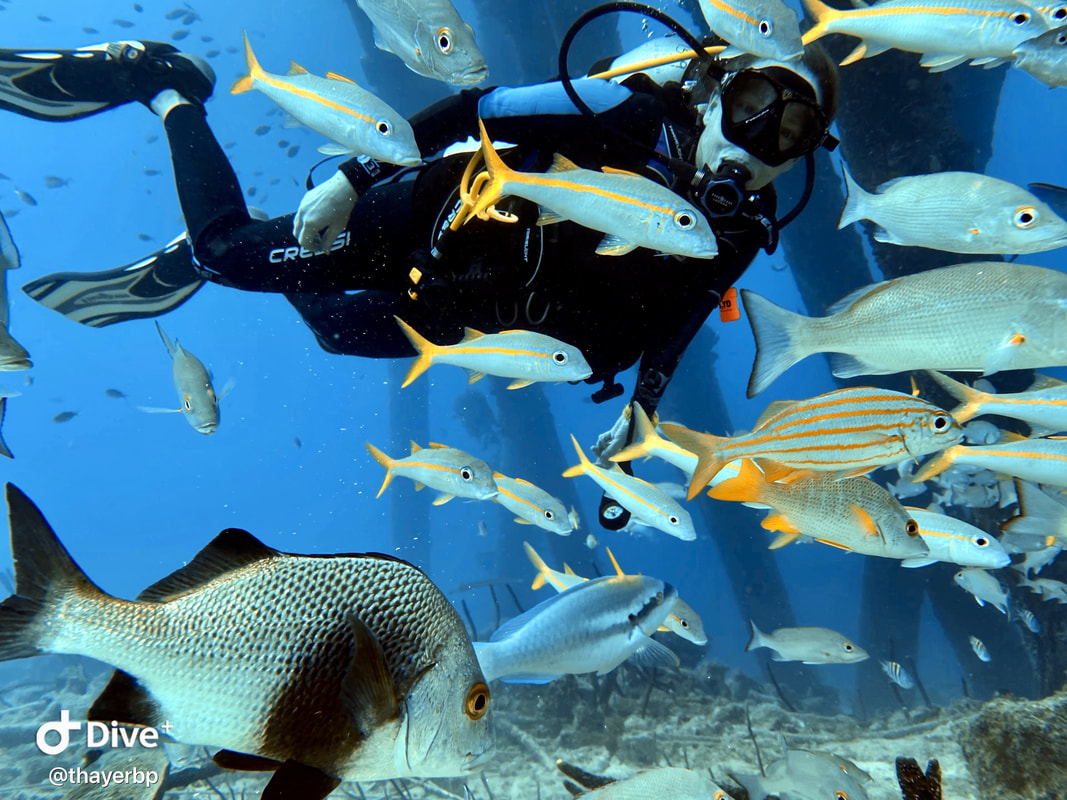|
As regular swimming/diving/snorkeling interlopers here in the waters of Bonaire — an arid island 50 miles off the coast of Venezuela that has been protecting its fringing reef since the 1970s — we have come to expect the unexpected in the ocean. Still, we were not prepared for the manta encounter of early December 2021. Ben and I regularly dive a north coast dive site called “Jeff Davis” to check in on the growth of a nursery of staghorn corals outplanted by Reef Renewal Bonaire. On this day, however, we submerged and finned off in the other direction. About 30 minutes into the dive, Ben uttered the loud, muffled underwater cry that is designed to get my attention when rattling the “H2Yo” attached to his BCD doesn’t. As I turned a large oceanic manta ray glided past. Our past experience with mantas has been that any sort of sighting is brief. As soon as a manta spots us, it is sayonara as the creature effortlessly wings off into the gloaming. On this day however, the manta moved slowly away from us and then barrel-rolled upward and came back around. She (he?) and her remoras lazily came back toward us within touching distance and then proceeded to dip and dive around us for several minutes, clearly interacting with us out of curiosity or play. She approached one last time, eyed me from her left cephalic fin, then winged quickly south again. There is no PADI signal for the expression of amazement and wonder underwater, so Ben and I had to be content with finishing the dive and waiting for the surface to discuss our Great Manta Encounter of 2021. We naturally turned to the Google upon returning home. Having always considered mantas to be among the most gratifying creatures to see when diving or snorkeling— here in Bonaire but also in all our other travels to tropical waters — we were still surprised to learn that mantas have the largest brains of all fish and that there is some research showing they even pass the self-recognition “mirror test” like elephants, primates and dolphins. Because manta rays are slow to reproduce (they give live birth to one pup every several years) and are overfished for their gill plates for use in traditional “medicine,” the International Union for the Conservation of Nature in 2020 listed the oceanic manta as endangered. Once again, humans are behind the devastation wrought upon a beautiful and sentient co-inhabitant of our planet. According to National Geographic, the good news is that many countries that have allowed their fisheries to haul the creatures from the ocean unabated are starting to see the stupidity of this. Indonesia (where I saw my first manta ray and fell instantly in love) was one of the first countries to understand that a single live manta in a tourist hot spot is worth about $1 million over its lifetime, while a dead manta is worth $500 in Asian markets. Let’s hope this is a calculation that will be made by many more countries over the coming years. And that is where this story was supposed to end. But shortly after I had finished writing this I came across a new study from the Marine Megafauna Foundation in which scientists are now suggesting that mantas use their cephalic lobes for communication. So let me update the first sentence of paragraph six to read: “She approached one last time, eyed me from her left cephalic fin and, to my amazement, dipped the fin up and down several times. It was so like a goodbye wave that my own hand rose up, almost instinctively of its own accord, and waved back. Then she winged away quickly south again. When I first wrote the story, I was certain that my interpretation of the gesture was typical human anthropomorphizing of animal behavior and that this could not be included in the story if it were to be taken seriously. Now I say our Bonaire manta was trying making a connection with us. She succeeded.
2 Comments
New year, same pandemic. As I write, Bonaire is in the midst of its largest Covid surge (most likely due to all the holiday togetherness) since the beginnings of our worldwide sickness. The good news is that hospitalizations here on island remain quite low. Omicron brings rapid and widespread infection, but mercifully comes with mild symptoms…especially among those who are vaccinated. Most Bonaireans are fully vaccinated and boosted. The other good news is that we have taken the past year of a quiet island to accomplish some key updates to Villa Salentein. After more than five years of trying (finding people here to do mid-level renovation projects is like trying to find a frog fish on your maiden open water dive) we finally managed to rustle up the materials and labor for a much-needed kitchen update. Gone is the wall oven that forced people to climb a stool in order to see the controls. Gone are the disintegrating cabinets from the early aughts. Gone is the center island ceiling exhaust structure upon which guests over 5’3” would be constantly hitting their foreheads. Gone are the dated, scraped and scuffed solid-surface counters. In place of all this is a fabulous new workspace, new appliances, new concrete countertops, and a graceful new design — allowing for air flow through the kitchen and sweeping views to the Caribbean sea — that more than offsets your kitchen labors. In addition, the pool was resurfaced and re-tiled, making it more inviting than ever to settle in with a painkiller by the pool and take a dip when the spirit moves you. Plan your stay here at Bonaire’s recently updated most fabulous home by contacting our island partners at QVillas: info@qvillas.com! We have dates available starting in early March. |
|
Proudly powered by Weebly


 RSS Feed
RSS Feed